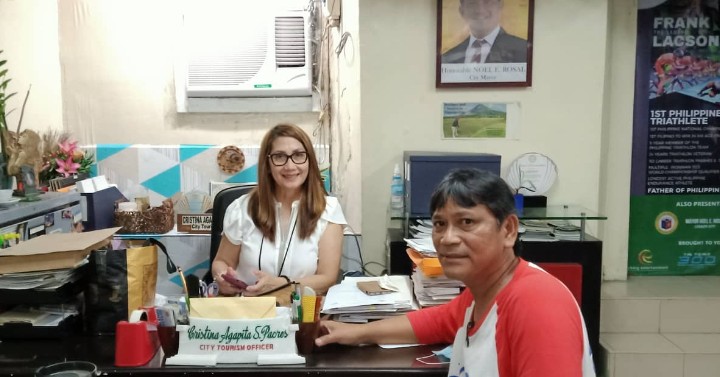How many people work in tourism Philippines:As of the latest reports, approximately 2.3 million people are directly employed in the Philippine tourism industry.

Brief Overview of the Philippine Tourism Industry
The Philippine tourism industry is one of the significant contributors to the country’s economy. Its rich cultural heritage, diverse wildlife, and the warm hospitality of its people attract millions of tourists each year from around the globe.
Tourism Employment Figures in the Philippines
The Philippine tourism industry plays a crucial role in job creation. Its diverse attractions and activities offer numerous opportunities for direct and indirect employment.
- Direct Employment: The tourism industry directly employs over 2.3 million people in the Philippines, representing approximately 7.8% of the country’s total employment.
- Indirect Employment: If we consider jobs indirectly linked to tourism such as those in retail, agriculture, and construction, the number of people whose employment is connected to tourism increases considerably.
- Regional Employment: Certain regions in the Philippines, such as Central Visayas, which includes popular tourist destinations like Cebu and Bohol, have a higher percentage of their population working in the tourism sector compared to other regions.
Comparison with Other Industries
Comparing the tourism sector with other major industries in the Philippines can further highlight its significance. Here’s a table comparing tourism employment with other significant sectors:
| Industry | Percentage of Total Employment |
|---|---|
| Agriculture | 25% |
| Services | 57% |
| Manufacturing | 8% |
| Tourism | 7.8% |
The table demonstrates that while the agriculture and service sectors still employ the majority of the population, the tourism industry is not far behind, signifying its significant role in the Philippine economy. Its share of total employment also indicates the potential for further growth.
Roles and Job Types in the Philippine Tourism Sector
The Philippine tourism sector presents an array of job opportunities, ranging from operational roles to management positions, each playing a crucial part in the overall success of the industry.
Overview of Job Types
There are various types of jobs within the Philippine tourism sector. These include roles in:
- Hospitality: This category comprises jobs in hotels, resorts, restaurants, and bars. Positions include front desk staff, chefs, bartenders, and hotel managers.
- Travel Services: This segment includes travel agents, tour guides, and operators who provide logistical support and information to tourists.
- Transportation: Air, sea, and land transportation roles are crucial for tourist mobility. Jobs include pilots, boat operators, drivers, and booking agents.
- Attractions and Leisure: Roles in this area involve the operation and management of various attractions, such as museums, theme parks, historical sites, and wildlife reserves.
- Supporting Services: This broad category includes roles in sectors that indirectly support tourism, such as retail, food production, and construction.
Importance of Different Roles
Each role in the tourism sector is critical as they all contribute to the overall tourist experience. For example, hotel staff ensure comfortable accommodation, while travel agents and tour guides help tourists navigate the Philippines’ attractions. Meanwhile, transportation workers ensure the efficient mobility of tourists, and those in the attractions sector provide entertaining and educational experiences. The supporting services roles, although often overlooked, play a fundamental part in maintaining and enhancing the industry’s infrastructure and supply chain.
Profiles of Tourism Workers
Tourism workers in the Philippines come from diverse backgrounds and hold various skill sets. Many have formal education in tourism or hospitality management, while others gain experience through on-the-job training. A large proportion of tourism workers are young, reflecting the industry’s dynamic and energetic nature. Moreover, the tourism sector is known for its gender diversity, employing a significant number of women.

Challenges Facing Tourism Workers in the Philippines
Despite the sector’s vibrant growth and substantial employment opportunities, tourism workers in the Philippines face several challenges. These range from employment conditions to global events affecting the industry.
Employment Conditions
One of the primary challenges relates to the employment conditions within the industry. Many tourism jobs are contractual or part-time, lacking the stability and benefits of permanent employment. Furthermore, the working hours in this industry can be long and irregular, often requiring work during holidays and weekends. Lastly, while some tourism jobs pay well, many low-level positions offer salaries that barely meet the minimum wage.
- Contractual Employment: Many jobs in the industry are contractual, which means workers are hired for a specific period, usually during peak tourism seasons.
- Part-Time Employment: Many roles, especially in hospitality and leisure services, are part-time, offering fewer hours and typically lower wages than full-time positions.
- Irregular Working Hours: Tourism industry jobs often require working during unusual hours, including nights, weekends, and holidays to accommodate the needs of tourists.
- Low Wages: For many lower-level positions in the tourism sector, such as housekeeping staff, tour guides, or service crew members, the pay often meets only the minimum wage. This can make it challenging for workers to maintain a decent standard of living, especially in urban areas with a high cost of living.
- Lack of Benefits: Due to the contractual and part-time nature of many tourism jobs, workers often do not receive benefits such as health insurance, retirement plans, or paid time off, which are typically available to full-time, permanent employees.
- Seasonal Employment: The tourism industry is highly seasonal, which can lead to periods of unemployment for workers during off-peak times.
Economic Instability and Seasonal Fluctuations
Tourism is a volatile industry, often influenced by economic trends and seasonal fluctuations. Economic downturns can lead to reduced travel and spending, directly impacting tourism jobs. Seasonal variations in tourist arrivals also create instability for tourism workers, with periods of boom followed by slow seasons, causing inconsistent income for many in the industry.
Impact of Global Events
The tourism industry is highly susceptible to global events, such as health crises, political instability, or natural disasters. The recent COVID-19 pandemic severely affected the tourism sector worldwide, and the Philippines was no exception. The pandemic led to international travel restrictions, causing a significant drop in tourist arrivals and leading to job losses and reduced income for many tourism workers.